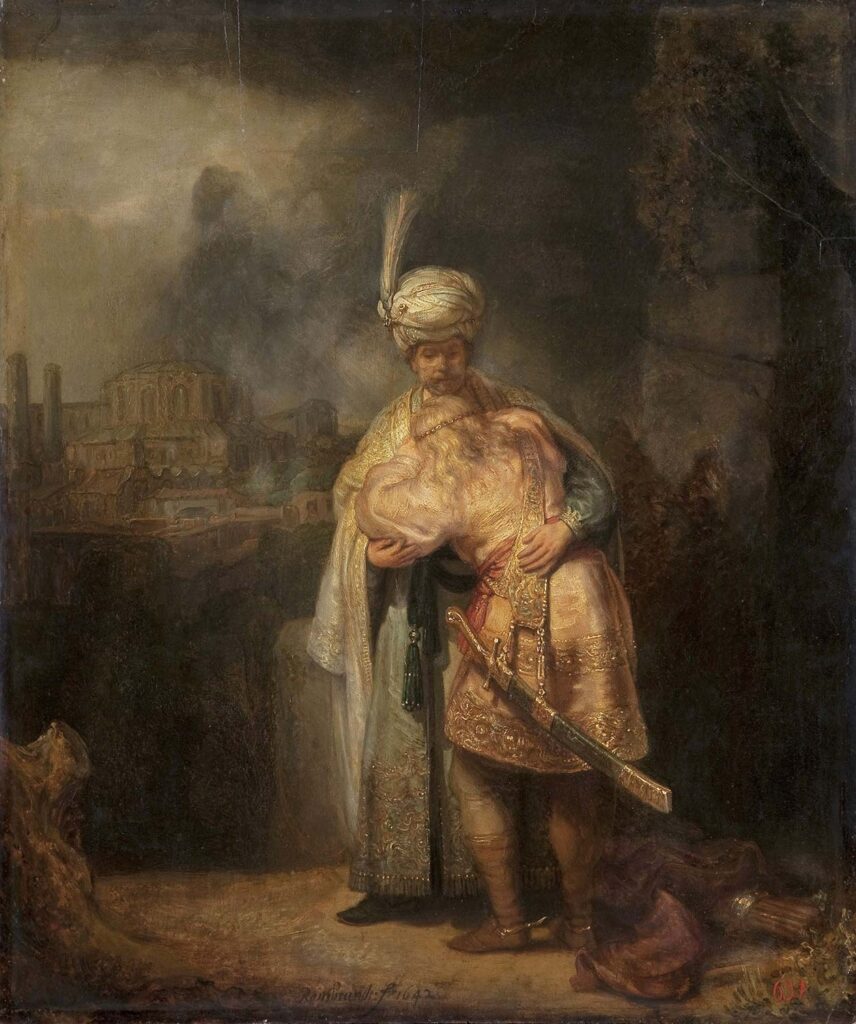David and Jonathan by Rembrandt van Rijn was created in 1642. The painting is in Hermitage Museum St Petersburg. The size of the work is 73 x 61,5 cm and is made of oil on panel.
After his wife’s death Rembrandt continued for a time to live in a grand style, assembling a collection of antiques in his Amsterdam home. Then, however a law suit put an end to the artist’s financial well-being and the 1640s were no longer a time of prosperity. The works that he painted in this period are marked by a confessional character. The subject of the painting David Parting with Jonathan was inspired by the Bible verse: “they kissed one another, and wept with one another, but David more.” This is the parting of two bosom friends: Jonathan the son of the king and the young hero David, the victor over Goliath, whom King Saul is plotting to kill out of jealousy for his fame. At the risk of his own life, Jonathan warns his friend of the danger. Read more in Hermitage Museum.
About the Artist: Dutch Golden Age painter, printmaker and draughtsman Rembrandt was born on 15 July 1606 in Leiden, in the Dutch Republic, now the Netherlands. As a boy, he attended a Latin school. At the age of 13, he was enrolled at the University of Leiden, although according to a contemporary he had a greater inclination towards painting. In 1624 or 1625, Rembrandt opened a studio in Leiden, which he shared with friend and colleague Jan Lievens. In 1627, Rembrandt began to accept students, which included Gerrit Dou in 1628 and Isaac de Jouderville… Read more
Order a reproduction of this work (printed on canvas)

